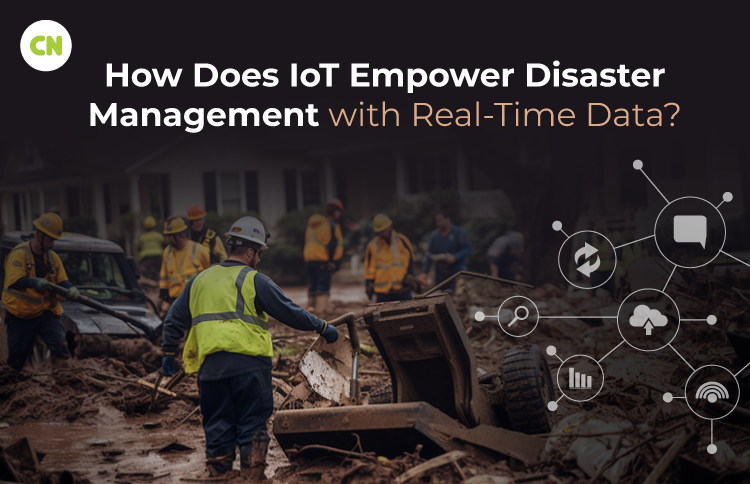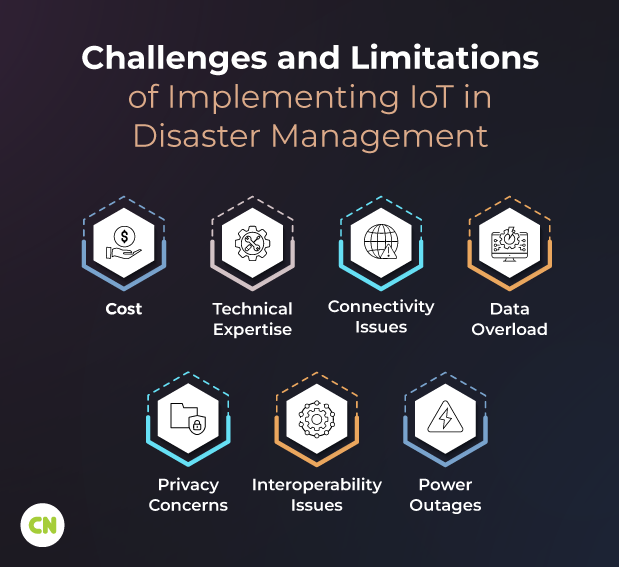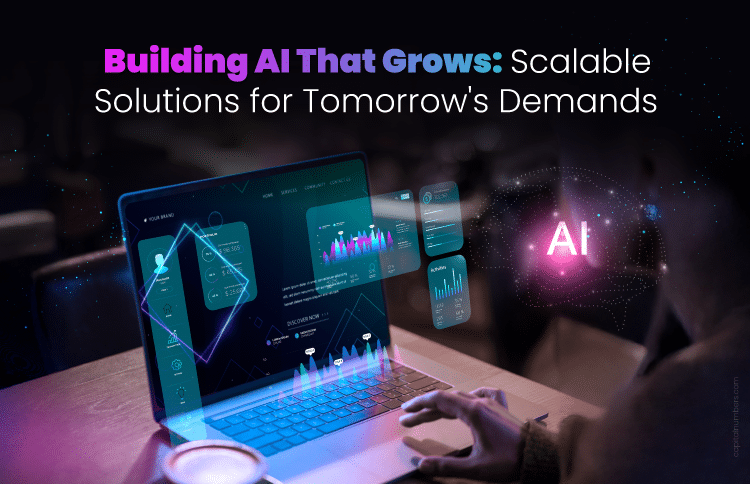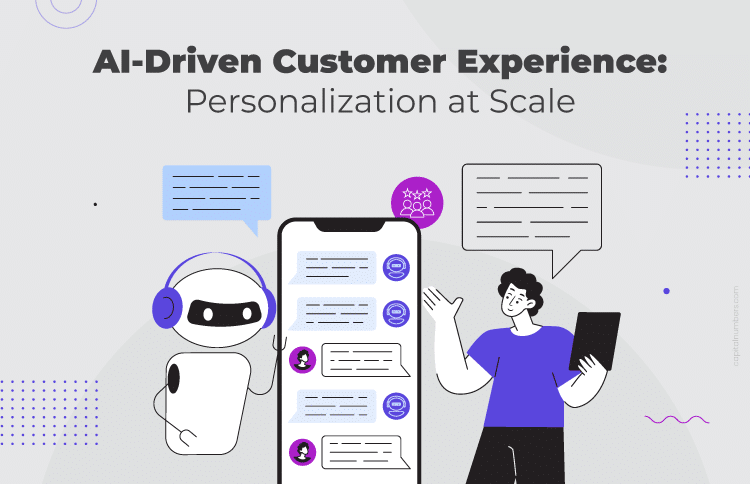How Does IoT Empower Disaster Management with Real-Time Data
Table of Contents
Welcome to the future of disaster management! With technology evolving rapidly, we’re now using IoT (Internet of Things) to change how we handle disasters. Real-time data collection is a big part of this. It helps us predict and understand disasters better. Plus, it lets us take action early to save lives and reduce damage. Come along as we explore how IoT is transforming disaster management, making the world safer and stronger.
Introduction to IoT and its Applications in Disaster Management
The Internet of Things (IoT) has revolutionized the way we collect, analyze, and utilize data in various industries. In recent years, this technology has also been recognized for its potential in disaster management. With real-time data collection and analysis capabilities, IoT services are transforming how emergency response teams handle disasters.
But what exactly is IoT? Simply put, it refers to a network of connected devices that can communicate with each other without human intervention. These devices are equipped with sensors that gather and transmit data over a wireless network.
In the context of disaster management, IoT devices can include everything from weather sensors and GPS trackers to drones and smart cameras. These devices work together to provide real-time information on various aspects such as weather conditions, infrastructure damage, and population movements.
One of the primary advantages of using IoT in disaster management is its ability to provide accurate and timely information. This allows emergency response teams to make informed decisions quickly, which can be critical during a crisis where every second counts.
For example, during natural disasters like hurricanes or earthquakes, traditional methods of data collection may not be feasible due to damaged infrastructure. However, with IoT devices already in place before the disaster strikes, crucial information can still be collected remotely.
Moreover, with the help of advanced analytics tools and machine learning algorithms, large volumes of data gathered by these devices can be analyzed in real-time. This enables emergency responders to identify patterns and trends that may help them predict future disasters or plan more effective relief efforts.
IoT also plays a significant role in mitigating risks associated with disasters. By continuously monitoring environmental factors such as temperature changes or water levels in rivers or dams, authorities can detect early warning signs for potential hazards. This allows them to take preventive measures before a disaster occurs or minimize its impact if it does happen.
Furthermore, post-disaster recovery efforts also benefit greatly from IoT technology. For instance, drones equipped with thermal imaging cameras can quickly identify survivors or locate areas that need urgent assistance. This information is crucial in determining where to allocate resources and prioritize rescue efforts.
The applications of IoT in disaster management are vast and far-reaching. Its ability to provide real-time data, automate processes, and mitigate risks makes it a valuable tool for emergency response teams to save lives and minimize damage during disasters. In the next section, we will explore some specific examples of how IoT is being used in disaster management scenarios around the world.
Understanding Real-Time Data Collection and its Importance in Disaster Management
Real-time data collection refers to the process of gathering and transmitting data as it happens, without any delay. This data is collected through various sensors and devices such as drones, satellites, weather stations, and even smartphones.
One of the core advantages of real-time data collection is its ability to provide a comprehensive understanding of an unfolding disaster situation. Traditional methods rely on historical or intermittent data that may not accurately reflect current conditions. With real-time data collection, however, decision-makers have access to up-to-date information that can help them make informed decisions quickly.
Moreover, this technology enables communication between different stakeholders involved in disaster management. By sharing real-time data in a centralized platform or dashboard accessible from any location with internet connectivity, teams can coordinate their response efforts more effectively.
Real-time data also plays a critical role in predicting potential disasters before they occur. For instance, by monitoring seismic activity or changes in atmospheric conditions using IoT devices continuously placed around areas prone to natural disasters like earthquakes or hurricanes; authorities can issue early warning alerts to residents at risk.
Case Studies: How IoT is being used in Disaster Management
The use of Internet of Things (IoT) technology in disaster management has been gaining traction in recent years. In this section, we will take a closer look at some case studies that highlight the successful implementation of IoT in disaster management.
1 Flood Monitoring System in Thailand
Thailand is prone to devastating floods, with the 2011 flood being one of the worst natural disasters in the country’s history. In response, Thailand’s Department of Disaster Prevention and Mitigation (DDPM) collaborated with IBM to develop an IoT-based flood monitoring system. The system consists of sensors installed along rivers and canals that measure water levels and send real-time data to a central platform. This allows authorities to monitor water levels and issue timely warnings to communities at risk. The flood monitoring system proved successful during the 2018 monsoon season, helping mitigate potential damage from flooding.
2 Earthquake Early Warning System in Japan
Japan is known for its frequent earthquakes, making it crucial for the country to have an effective early warning system in place. In collaboration with multiple partners, including NTT DoCoMo and Toyota Motor Corporation, Japan developed an earthquake early warning system using IoT technology. The system uses accelerometers installed on high-rise buildings to detect seismic activity and sends real-time alerts via mobile phones before the earthquake strikes. This has helped reduce casualties by providing people with valuable seconds or even minutes to prepare for an earthquake.
3 Tracking Hurricane Evacuation Routes in Florida
In 2017, Hurricane Irma wreaked havoc on Florida’s coastal communities, causing widespread damage and destruction. As part of their disaster preparedness efforts, Florida’s Department of Transportation implemented a smart traffic management system using IoT sensors on major evacuation routes. These sensors provided real-time data on traffic flow, allowing authorities to adjust evacuation routes in real-time to reduce congestion and facilitate the safe evacuation of residents.
4 Fire Detection and Monitoring System in Australia
Australia’s harsh climate often leads to devastating wildfires that can quickly get out of control. To improve fire management efforts, the New South Wales Rural Fire Service (NSW RFS) implemented an IoT-based fire detection and monitoring system. The system uses sensors and cameras installed across high-risk areas to detect fires early on and provide real-time information to firefighters. This has helped reduce response time, allowing for faster containment of fires.
These case studies demonstrate how IoT technology is revolutionizing disaster management by providing real-time data that enables timely decision-making and efficient response efforts. With further advancements in IoT, we can expect even more innovative solutions that will help mitigate the impact of natural disasters on communities worldwide.
Predictive Modeling: Using Real-Time Data to Improve Emergency Response Systems
Predictive modeling is an essential tool in leveraging the power of real-time data for improving emergency response systems. It involves using historical and current data to create algorithms that can predict future events or trends. In the context of disaster management, predictive modeling can provide valuable insights for effective decision-making and resource allocation during emergencies.
Real-time data, collected through the Internet of Things (IoT) devices such as sensors, cameras, and drones, has opened up new possibilities for predictive modeling in disaster management. These devices continuously gather data from their surroundings and transmit it in real-time to a central system. This allows emergency responders to access crucial information immediately and make informed decisions based on accurate data.
One major benefit of predictive modeling is its ability to anticipate disaster scenarios before they even occur. By analyzing historical data on weather patterns, natural disasters, and other risk factors specific to a region, predictive models can generate early warning signals for potential emergencies. This helps emergency responders prepare and position themselves strategically before a disaster strikes.
Moreover, real-time data collection enables predictive modeling to be dynamic and adaptable. As the situation on the ground changes rapidly during a disaster, traditional models may become outdated quickly. However, with real-time data constantly feeding into the system, predictive models can update themselves accordingly and provide accurate predictions throughout the duration of an emergency.
Another advantage of using predictive modeling in emergency response systems is its ability to optimize resource allocation. During an emergency situation where every second counts, it is crucial to allocate resources efficiently for maximum impact. Predictive models can help determine where resources should be deployed based on factors such as population density, infrastructure layout, and severity of damage predicted by the model.
Furthermore, with advancements in artificial intelligence (AI) technology and machine learning algorithms being integrated into predictive models, their accuracy has greatly improved over time. AI-powered models can analyze vast amounts of real-time data quickly and identify patterns that humans may not be able to detect. This can significantly enhance the decision-making process for emergency responders and lead to more effective disaster management.
The Role of IoT Devices in Different Phases of Disaster Management (Preparation, Response, Recovery)
The rapid advancements in technology have revolutionized various aspects of our lives, including disaster management. Among these technological innovations, Internet of Things (IoT) devices play a crucial role in enhancing disaster management efforts. With their ability to collect and transmit real-time data, IoT devices have become an invaluable tool for different phases of disaster management – preparation, response, and recovery.
Preparation is the first phase of disaster management, and it involves taking proactive measures to minimize the impact of potential disasters. IoT devices are essential in this phase as they enable authorities to gather relevant data that can help in identifying high-risk areas and developing appropriate mitigation strategies. For instance, sensors installed on buildings and infrastructure can monitor factors such as temperature, humidity, and structural integrity, providing valuable insights into potential hazards.
In the response phase, when a disaster has already occurred, every second counts. Real-time data collected by IoT devices plays a critical role in minimizing loss of life and property during this phase. Emergency responders can use IoT-enabled drones equipped with cameras and thermal sensors to assess damage and identify survivors quickly. These drones can also provide live feeds from inaccessible areas that aid rescue operations. Furthermore, wearables such as smartwatches or health monitoring devices can track vital signs of individuals trapped or injured during disasters, enabling emergency responders to provide timely medical assistance.
After the immediate danger has passed, the recovery phase begins. This stage involves restoring infrastructure and services disrupted by the disaster while providing support for affected individuals and communities. Here again, IoT devices play a crucial role by collecting real-time data that helps authorities understand the extent of damage caused by the disaster accurately. This information enables them to allocate resources efficiently for reconstruction efforts.
Moreover, post-disaster tracking using GPS-enabled sensors attached to relief supplies ensures their efficient distribution among those most in need. Additionally, IoT devices can monitor the air quality and water supply in affected areas, providing crucial information for ensuring the health and safety of residents.
IoT devices play a significant role in all phases of disaster management – preparation, response, and recovery. As technology continues to advance, we can expect further enhancements in the use of IoT devices for disaster management, ultimately making our communities more resilient.
Challenges and Limitations of Implementing IoT in Disaster Management
Despite the potential benefits, implementing IoT in disaster management also comes with its own set of challenges and limitations. These must be addressed in order to fully harness the power of real-time data collection for effective disaster management.
1 Cost
One major challenge is the cost associated with implementing an IoT system. This includes the cost of devices, sensors, infrastructure, and maintenance. The initial investment required to set up a comprehensive IoT network can be significant, especially for organizations or regions with limited resources.
2 Technical Expertise
Another limitation is the need for technical expertise to design, install, and maintain an IoT network. It requires skilled professionals who are knowledgeable about various aspects such as connectivity protocols, sensor deployment techniques, data analysis methods, and cybersecurity measures.
3 Connectivity Issues
IoT relies heavily on connectivity between devices and networks to transmit real-time data. However, disasters often occur in remote or underdeveloped areas where internet connectivity may be unreliable or non-existent. This can hinder the effectiveness of an IoT-based disaster management system.
4 Data Overload
The vast amount of data collected by IoT devices can also pose a challenge for disaster management teams. Without proper data analysis tools and techniques in place, it can be overwhelming to sift through large volumes of information to identify relevant insights and make timely decisions.
5 Privacy Concerns
As with any technology that collects personal information, there are valid concerns about privacy when it comes to using IoT in disaster management. The use of sensors and cameras may raise ethical issues if not implemented carefully within regulatory guidelines.
6 Interoperability Issues
In a disaster scenario where multiple agencies or organizations are involved in relief efforts, interoperability issues may arise if they are using different types of IoT systems that are not compatible with each other.
7 Power Outages
During natural disasters such as hurricanes or earthquakes, power outages are common. This can impact the functioning of IoT devices and disrupt the flow of real-time data, hindering disaster management efforts.
Despite these challenges and limitations, the benefits of implementing IoT in disaster management outweigh the drawbacks. As technology continues to advance and costs decrease, it is expected that these limitations will be addressed, making IoT an indispensable tool for enhancing disaster management in the future.
Future Outlook: Potential Advancements and Impact of IoT on Disaster
As technology continues to advance, the potential for IoT to revolutionize disaster management is immense.
One area with vast potential is in predictive analytics. With real-time data collection, IoT devices can gather information about weather patterns, seismic activity, and other environmental factors that could indicate a potential disaster. By analyzing this data, emergency management teams can make more accurate predictions about when and where disasters may strike. This can help in developing targeted evacuation plans and allocating resources beforehand to areas at high risk of being affected.
Another exciting possibility is the use of AI-powered chatbots for communication during disasters. These chatbots can be programmed with pre-approved responses from emergency management agencies, providing constant updates on evacuation routes, shelter locations, and other vital information. They also have the ability to answer frequently asked questions from affected individuals or provide emotional support during stressful situations.
The potential for IoT to enhance disaster management is virtually limitless. With continued advancements and integration of this technology into emergency response efforts, we can expect to see more efficient and effective disaster management systems in the future. It is essential for governments and organizations to invest in and harness the power of IoT to better prepare for and respond to disasters of all kinds.

















